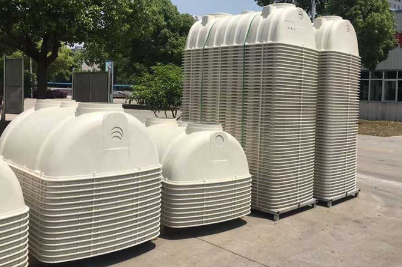Here is Compression Resistance Fiberglass Septic Tank Manufacturer talking about what is the use of the sewage tank capping material.
If you have any idea about Compression Resistance Fiberglass Septic Tank, welcome to contact us and discuss.
Nowadays, in order to solve the current situation that the sewage pool seriously affects the surrounding environment, the state has created the technology of sewage pool capping. Some environmental protection equipment manufacturers, based on years of product design experience, combined with their own actual conditions and development, have produced effluent tanks covered with deodorant treatment technology, covering the liquid on the cover and sealing to prevent the exhaust gas from going out, thus achieving improved air quality and protection. The environment and other purposes. So what is the use of the sewage tank capping material? Let's take a look at it.

Now the effluent tank on the market is deodorized and covered with several commonly used material covers:
1. Membrane system + metal skeleton;
2. Ordinary carbon steel skeleton + sunshine board;
3. Stainless steel skeleton + glass steel plate;
4. FRP arched cover.
The first three steel skeleton structures and the support part of the most roof covering forms are inevitable to place the steel structure inside the top cover. Since the top of the pool is covered, the concentration of corrosive water vapor inside the double is increased. The temperature of sunlight is very high, and the internal structure is extremely corrosive. Generally, the life span is within a few years. Once local corrosion occurs, the entire operating platform must be removed. In a short time, the entire structure may be constructed twice. The shaped cover is easy to aging, self-important, the material quality is unstable, the surface is easy to crack, the processing design is poor, and it is easy to be affected by the high temperature and low-temperature difference.